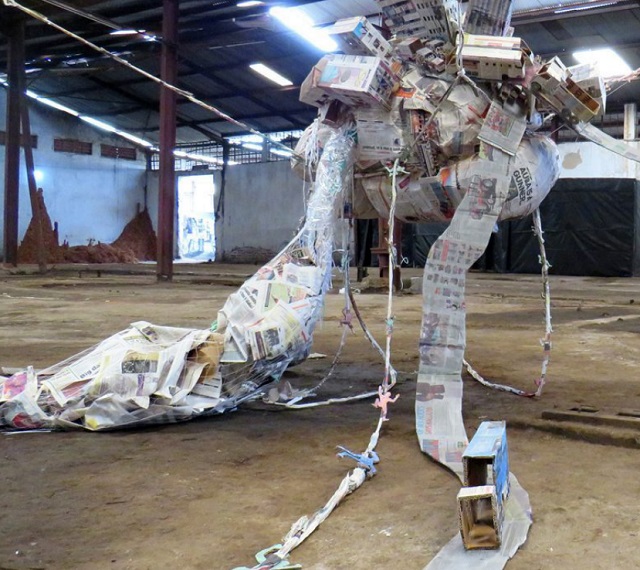
`Get Up Stand Up’ theme invites young artists to create art beyond the traditional
Kampala, Uganda | DOMINIC MUWANGUZI | The Covid-19 pandemic has inspired unusual ways of doing things in many sectors. The creative arts are no exceptional to this new wave as the Kampala Art Biennale 2020 becomes a virtual experience. It reflects the “new normal” appropriated in the creative processes of the participating artists: apprentices and masters. The master-apprentice model in this year’s edition is a replication of the KAB18 Studio theme that had several artists from different cultural backgrounds globally, tutored by seven renowned art masters.
It is the need to continue to grow the young generation of artists to grace the international stage of art that has inspired this year’s catchy curatorial theme: “Get Up Stand Up!” adopted from the music of legendary reggae artists Bob Marley and Peter Tosh.
In complying to this activist slogan, appropriately contextualised in the ongoing political excitement in the country that is spearheaded by the youth. They constitute the largest percentage of the electorate in the 2021 general elections and the biennale has invited young artists to get out of their comfort zone and create art that transcends the traditional format of art making.
KAB20 is the fourth edition of the Biennale and opened on Oct. 28.
This year’s edition is not only a continuation of the KAB18 objective of raising high the banner of contemporary art from Africa onto the global art stage through training young artists into the different approaches of art making, but also inspires them to stand up and confront the challenges that they face on a day to today basis. The artist can do this through their art like witnessed before by legendary musicians Bob Marley and Peter Tosh. In this, `Get Up Stand Up’ is beyond a catchy theme to sing along to or respond to in their work. It is designed to linger in the minds of the youth as they seek to advocate for their rights and freedom.
The biennial navigates the challenges of art production and display encountered in the use of the virtual space. Dr. Lillian Nabulime, one of the masters in this edition, says the masters faced many challenges when working with the apprentice artists to produce the works.
“With sculpture which was my discipline, it was challenging to produce the work with the learners because of the technicalities involved in handling hardwood. However, the possibility of working with other techniques like casting and welding created some bit of relief,” she says.
The hiccups experienced in the creative process, incidentally were critical in igniting discomfort in the artists and consequently provoked them to think outside the proverbial box. At the same time, such approach offers the artwork the necessary “unusualness” that inspires varied interpretation for the work from the audiences. As such, the biennial realises one of its many objectives of providing a platform for young artists to learn the different ways to create art through experimentation but also opens up varied conversations on art while reaching out to different audiences.
One may argue that the biennial is unapologetically an avenue to stimulate the thought patterns and imagination of the youth to begin to ask questions concerning their identity and position in what is going on around them; inclusive of the social-political influences. Hence, the theme `Get Up stand Up’ resonates with the political mood of oppression and marginalisation felt by the younger generation that largely inhabit urban centres like Kampala. Kampala is the economic hub of Uganda with thousands of youth employed in different sectors of the economy.
While the biennial is successful in its ideals, it still encounters one of the biggest challenges in its organisation structures. The fact that the event is largely funded by international art funders, including the European Union, but with no local funding available, is problematic. In this, it becomes difficult to penetrate the local audience with common assumptions among the average citizenry that it is an event of the white expatriate community and those handfuls of locals in their network!
In fact in the past editions, the biennial has tended to attract a more white audience plus the local elite, while compromising on the average city dwellers. Nonetheless, such a bias to the more “affluent audience” can be justified by the international outlook of Kampala Art Biennale. Clearly, the festival is concerned with the wider vision of making Kampala one of the biggest art destinations on the continent for the international community and also pushing contemporary art from Uganda to the global art circles.
****
Details of the virtual program are available on all social platforms of Kampala Art Biennale and Foundation website.
 The Independent Uganda: You get the Truth we Pay the Price
The Independent Uganda: You get the Truth we Pay the Price


